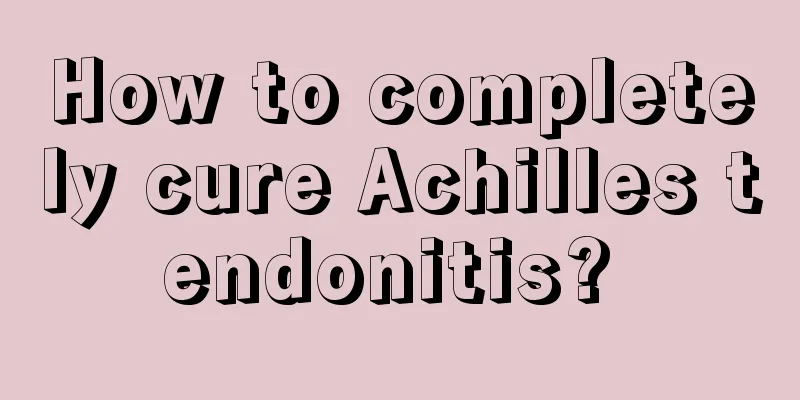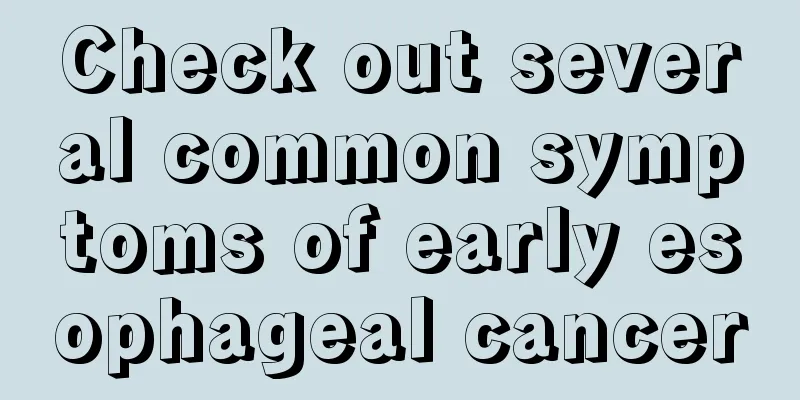Learn more about testicular cancer

|
Testicles are the lifeblood of men. They play a vital role in male fertility and directly affect male sexual function. This shows how important they are. Testicular cancer is a malignant tumor that occurs in the testicles and is very harmful. Let me introduce testicular cancer to you. Testicular tumor is one of the common tumors in urology. It is almost always malignant, and there are three peaks in the age of onset: yolk sac tumor (infantile embryonal tumor) is the most common in infancy; various types of testicular tumors can be seen between the ages of 20 and 40, but seminoma is still the most common, and seminoma is the main tumor after the age of 70. Its cause is still unclear, and it is currently believed that its onset is related to both genetic and acquired factors. Among them, it is most closely related to cryptorchidism. The chance of cryptorchidism developing tumors is 10 to 14 times greater than that of normal people. Cryptorchidism in the abdominal cavity is higher than that in the groin. Testicular fixation does not reduce the incidence of malignant changes, but it can make tumors easier to detect. The cause of the disease is still unknown, and it is currently believed that the onset of the disease is related to both genetic and acquired factors, among which cryptorchidism is the most closely related. The chance of developing tumors in cryptorchidism is 10 to 14 times greater than that in normal people, and cryptorchidism in the abdominal cavity is more common than in the groin. Testicular tumors are divided into germ cell tumors, non-germ cell tumors and testicular secondary tumors. Germ cell tumors are the most common. Germ cell tumors are divided into seminoma, non-seminoma (embryocarcinoma; teratoma; choriocarcinoma, etc.) and mixed germ cell tumors. Non-germ cell tumors are divided into Leydig cell tumors, Sertoli cell tumors, gonadal stromal tumors and mixed tumors. The most common symptom is a gradual, painless enlargement of the testicles with a feeling of heaviness. The enlarged testicles of seminoma often maintain the testicular contour and have a consistent texture, while teratoma is nodular and has inconsistent hardness and softness. About 10% of patients feel pain due to intratesticular bleeding or infarction, and 10% of patients may have metastatic symptoms, such as large retroperitoneal lymph node metastasis, compression of nerve roots, back pain, lung metastasis may cause cough and dyspnea, duodenal metastasis may cause anorexia, nausea and vomiting, bone metastasis may cause bone pain, etc. Testicular Leydig cell tumor should be considered when children have testicular masses and symptoms of precocious puberty, or adults have gynecomastia and loss of libido. |
<<: The best way to prevent testicular cancer
>>: How to prevent testicular cancer
Recommend
Is lung cancer serious? It is serious, you need to pay attention to these four points
Lung cancer is highly malignant and can induce br...
What are the uses and usage of potassium permanganate?
Potassium permanganate looks black and purple in ...
Introduction to self-diagnosis methods for skin cancer
The diagnosis of skin cancer generally requires t...
The symptoms of pepper allergy are like this
Whenever people have skin allergies, doctors will...
When does the facial bones develop?
We all know that people stop developing when they...
Nine tips for using your eyes
Eyes are compared to "windows to the soul&qu...
What are the early symptoms of laryngeal cancer?
The early symptoms of laryngeal cancer are not ea...
What are the symptoms of thyroid cancer
What are the symptoms of thyroid cancer? Knowing ...
What activities can be done after colon cancer surgery
If you are taking chemotherapy drugs, and it is a...
Replace cornea
Corneal replacement means removing the damaged co...
What can I eat in the late stage of gastrointestinal cancer
When colorectal cancer reaches the late stage, pa...
Can I eat before the physical examination?
Physical examinations are usually scheduled in th...
How to treat pathological floaters
My child is 15 years old. The last time I went ho...
How to store dried garlic
Although garlic has a strong taste, it has extrem...
Do you know the tips for hair care
Many people focus on appearance. Especially the h...









